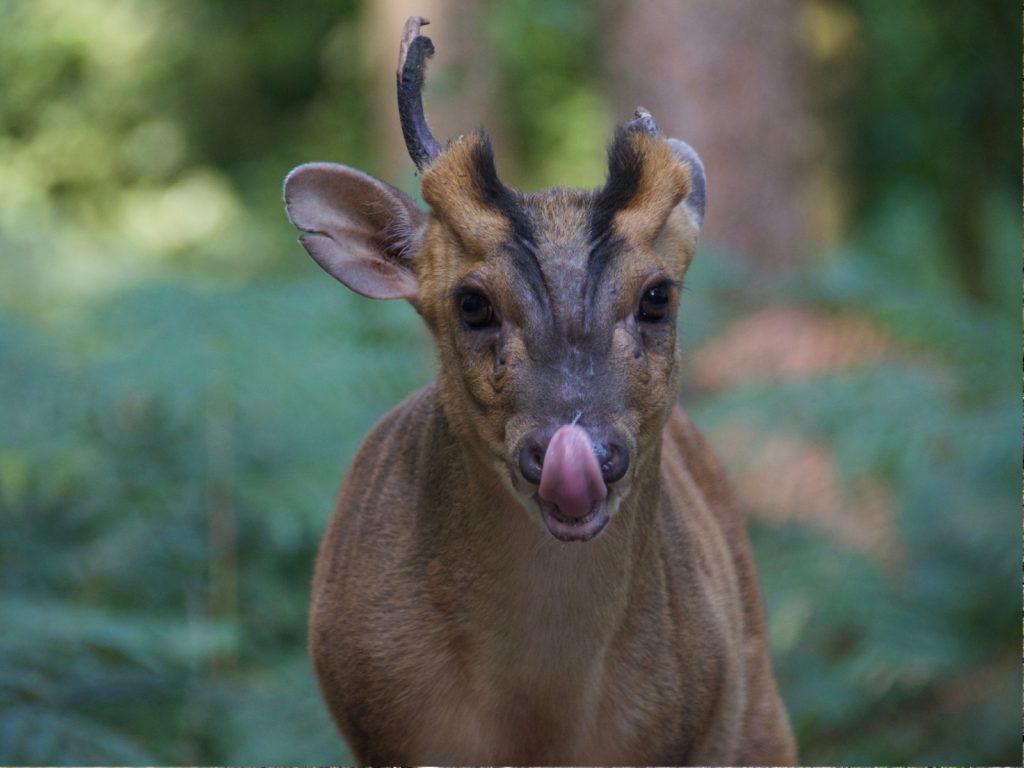Muntjac deer, small in stature but big in impact, have become a familiar sight in many parts of Britain. These diminutive deer, originally from Asia, were introduced to Woburn Park in Bedfordshire in the early 20th century. Since then, they’ve spread rapidly across the country, causing both wonder and worry. Their story is a complex tale of adaptation, invasion, and the unintended consequences of human actions on local ecosystems. Because of how well they’ve adapted, the fact that they breed all year round, and their general behavior, muntjac are one of the most successful invasive mammals in the country.
Where I live, these pests are everywhere. Before dog training classes, I walk my dogs in the woods across from the hall, and the muntjac are quite literally everywhere. They’re also unafraid as locals love to feed them, so they willingly approach you and will even steal food from children’s hands. There are calls from many to cull the out of control population, but a lot of resistance from those who love to feed them and make them ever more problematic.
Tiny but Mighty

Muntjac are the smallest deer species found in the UK. They stand at just 45-52 cm tall at the shoulder, making them about the size of a medium dog. Despite their small stature, they can have a big impact on their environment. Their compact size allows them to squeeze through gaps in fences and hedges, helping them spread quickly across the countryside. An adult muntjac typically weighs between 10-18 kg, with males being slightly larger than females.
Barking Mad
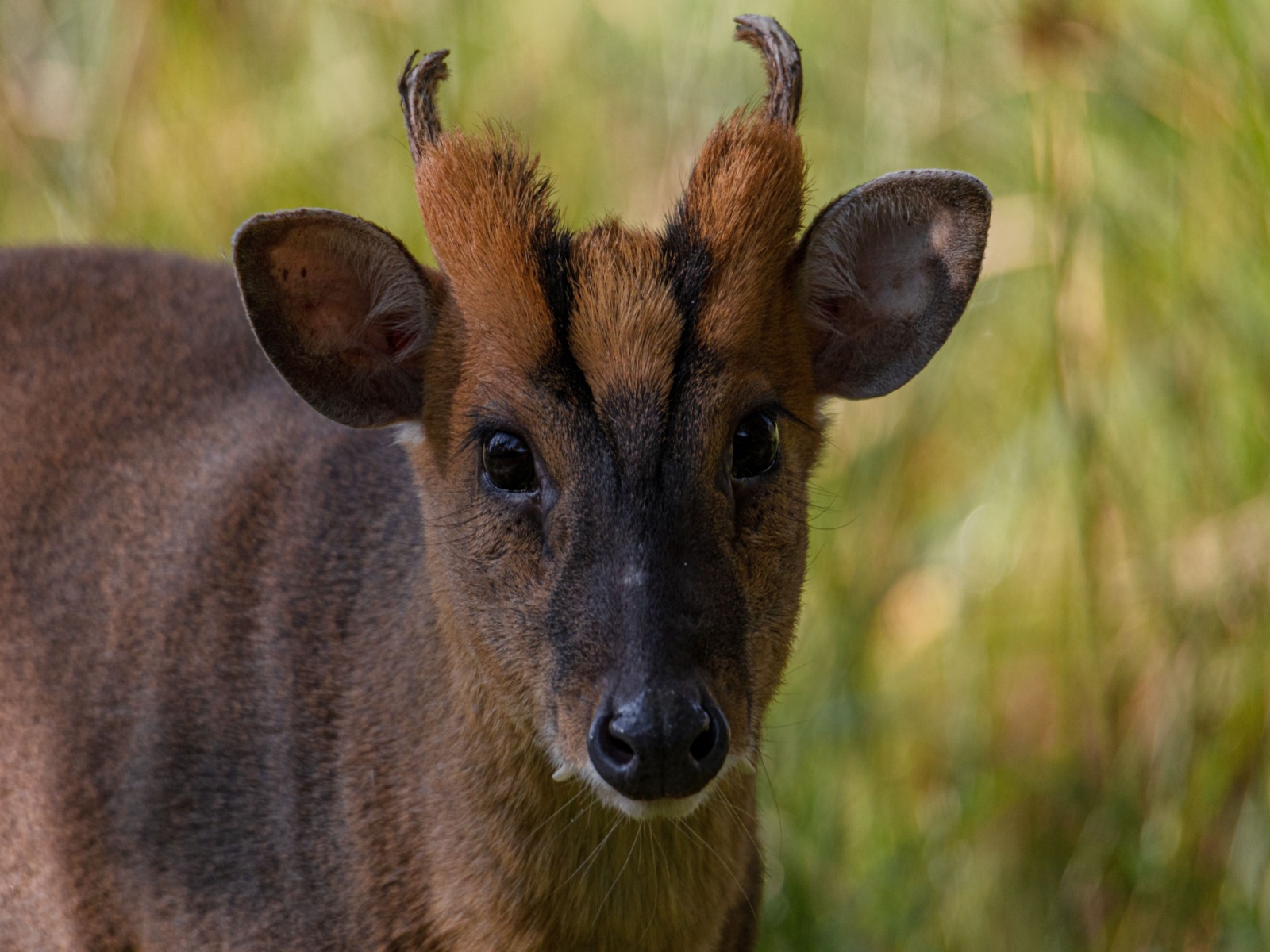
One of the most surprising things about muntjac is their voice. Unlike other deer, which are generally silent, muntjac are known for their loud, dog-like barks. These calls can be heard throughout the year, especially at night. Many people mistake the sound for a fox or a dog, leading to some confusion in areas where muntjac have recently arrived. The bark is often described as a short, sharp “yap” repeated several times in quick succession.
Fangs for the Memories
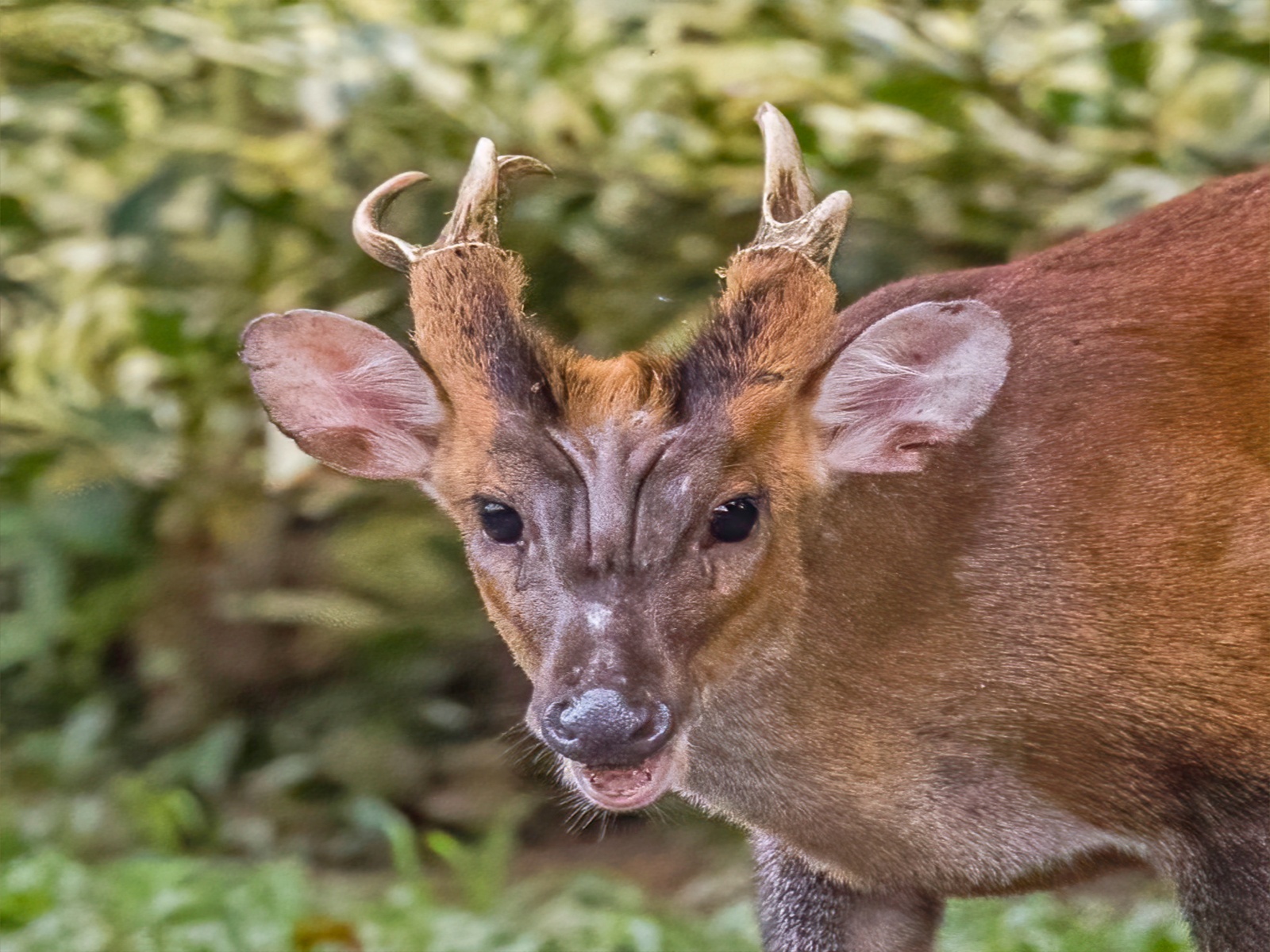
Male muntjac sport an unusual feature for a deer – long, curved canine teeth that protrude from their upper jaws. These ‘tusks’ can grow up to 5 cm long and are used in fights with other males. The presence of these prominent teeth gives muntjac a rather vampire-like appearance when they open their mouths. Females also have canine teeth, though they’re much smaller and rarely visible.
Year-Round Breeding
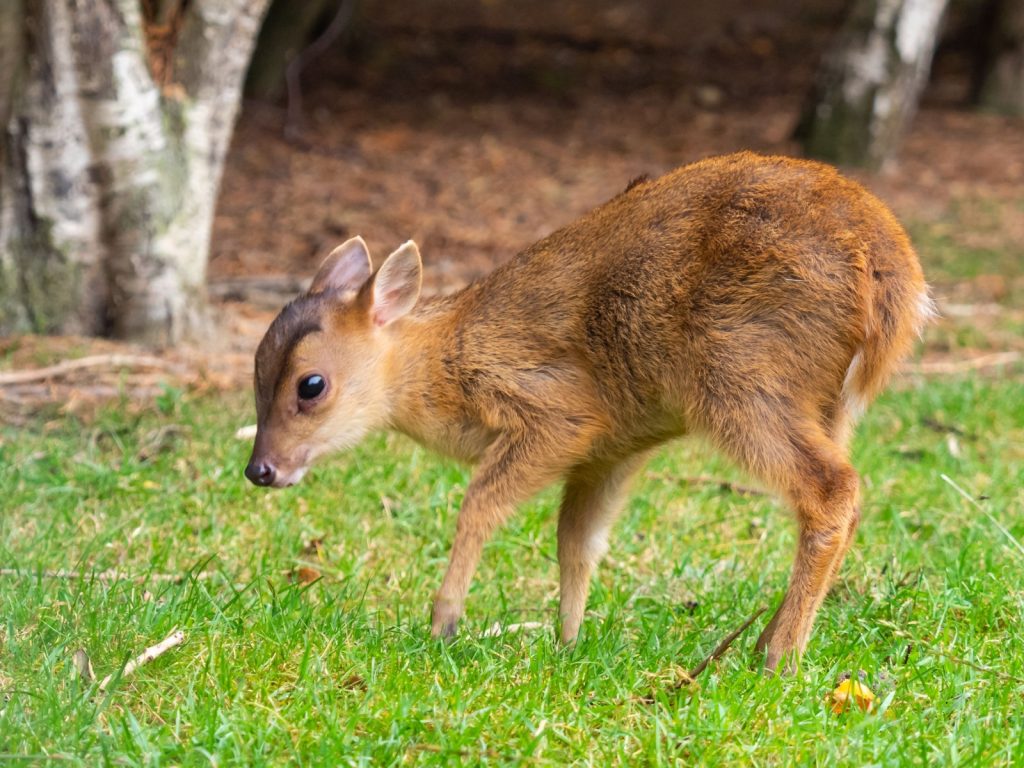
Unlike most deer species, muntjac don’t have a specific breeding season. Females can become pregnant again within days of giving birth, meaning they can produce a fawn every seven months. This rapid breeding cycle is one of the reasons muntjac populations can grow so quickly, making them a challenge to control. A female muntjac can start breeding at just seven months old, further accelerating population growth.
Secretive Survivors
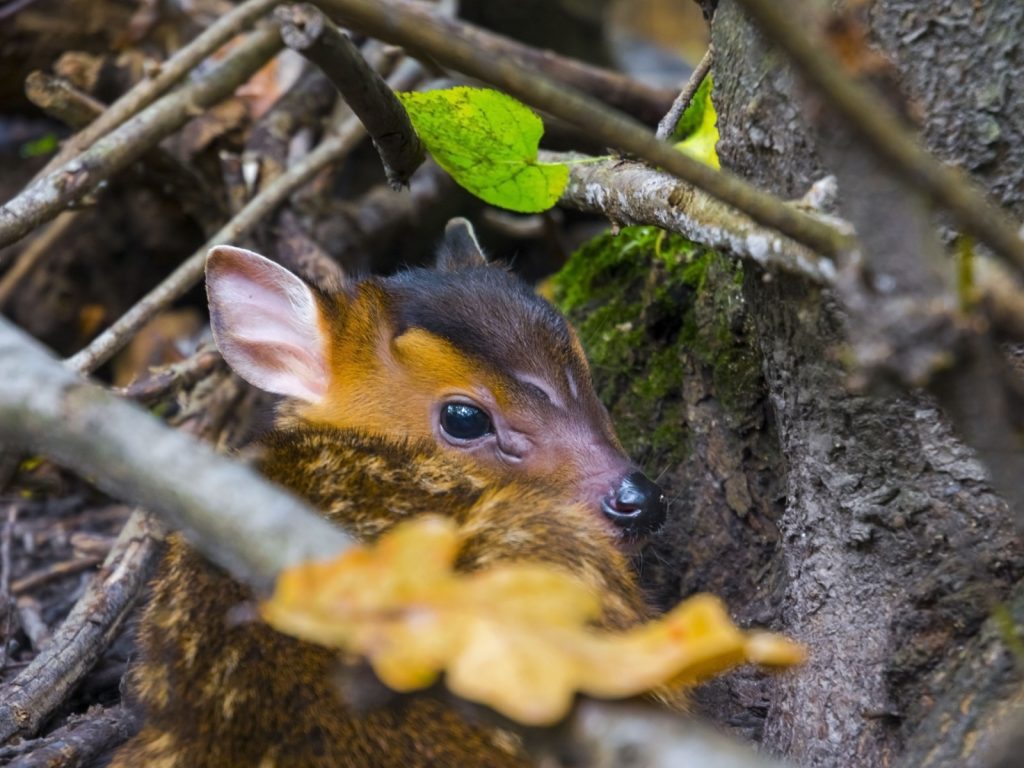
Muntjac are masters of hiding in plain sight. They prefer dense undergrowth and are most active at dawn and dusk. Their reddish-brown coat provides excellent camouflage in woodland settings. Many people living in areas with high muntjac populations may never actually see one, despite the deer being right on their doorstep. Muntjac have excellent hearing and a keen sense of smell, which helps them avoid detection.
Exotic Origins
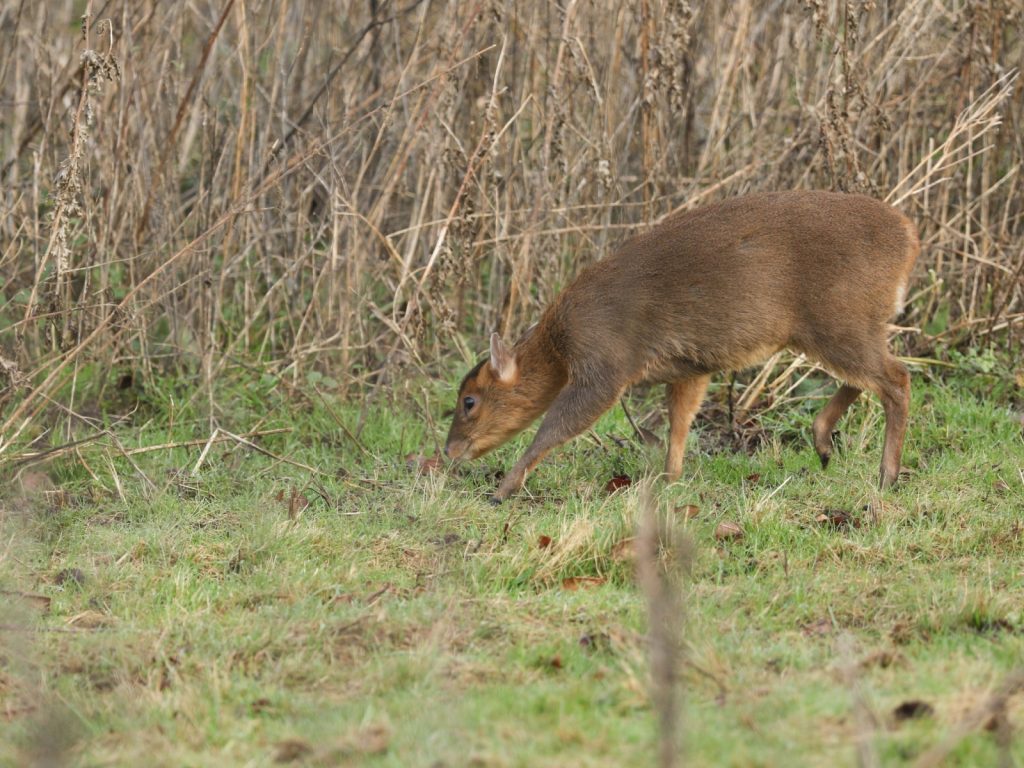
The muntjac found in Britain are primarily Reeves’s muntjac, native to parts of China and Taiwan. They were brought to Woburn Abbey in Bedfordshire in 1894. From this initial introduction, they’ve spread to cover much of England and parts of Wales, with occasional sightings in Scotland. The species is named after John Reeves, a British naturalist who worked for the East India Company in the 19th century.
Destructive Diners

Muntjac have a varied diet that includes leaves, flowers, berries, and nuts. However, their feeding habits can be destructive to native plant species. They have a particular fondness for bluebells and other woodland flowers, which can significantly impact local ecosystems. In some areas, their browsing has led to a noticeable decline in woodland biodiversity. Muntjac can reach higher branches by standing on their hind legs, allowing them to feed on plants up to 1.2 meters high.
Adaptable Urbanites
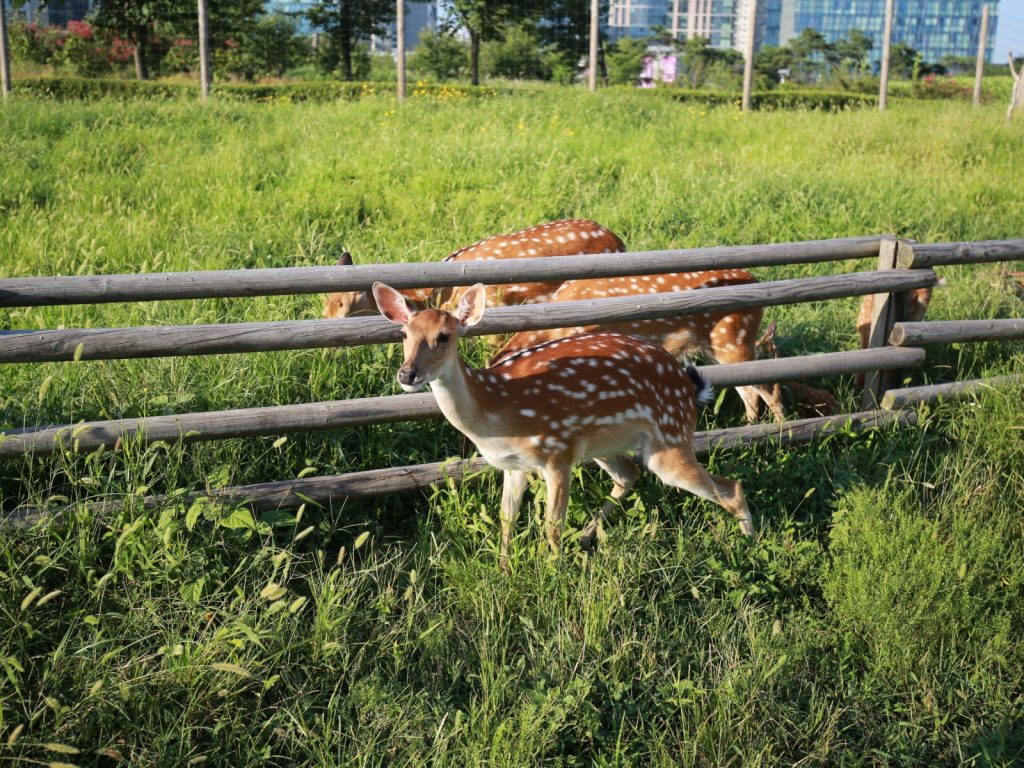
While typically associated with woodland, muntjac have shown a remarkable ability to adapt to urban environments. They can be found in parks, gardens, and even industrial estates in some towns and cities. This adaptability has contributed to their rapid spread across the country. Muntjac have been spotted in surprising urban locations, including central London parks and university campuses.
Ancient Ancestry
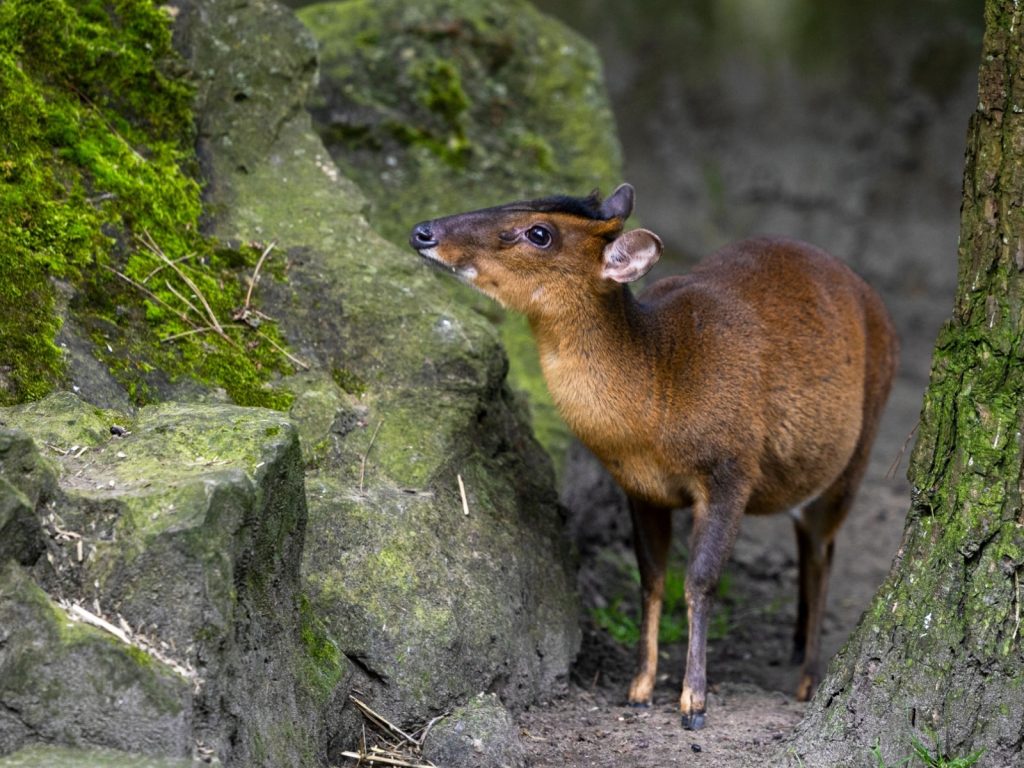
Muntjac are sometimes called ‘living fossils’ because they’re one of the oldest deer species still in existence. Their lineage dates back to prehistoric times, with fossil evidence suggesting they’ve changed little in millions of years. This ancient heritage makes them a fascinating subject for evolutionary biologists. The earliest known muntjac fossils date back to the Miocene epoch, approximately 15-20 million years ago.
Solitary Nature
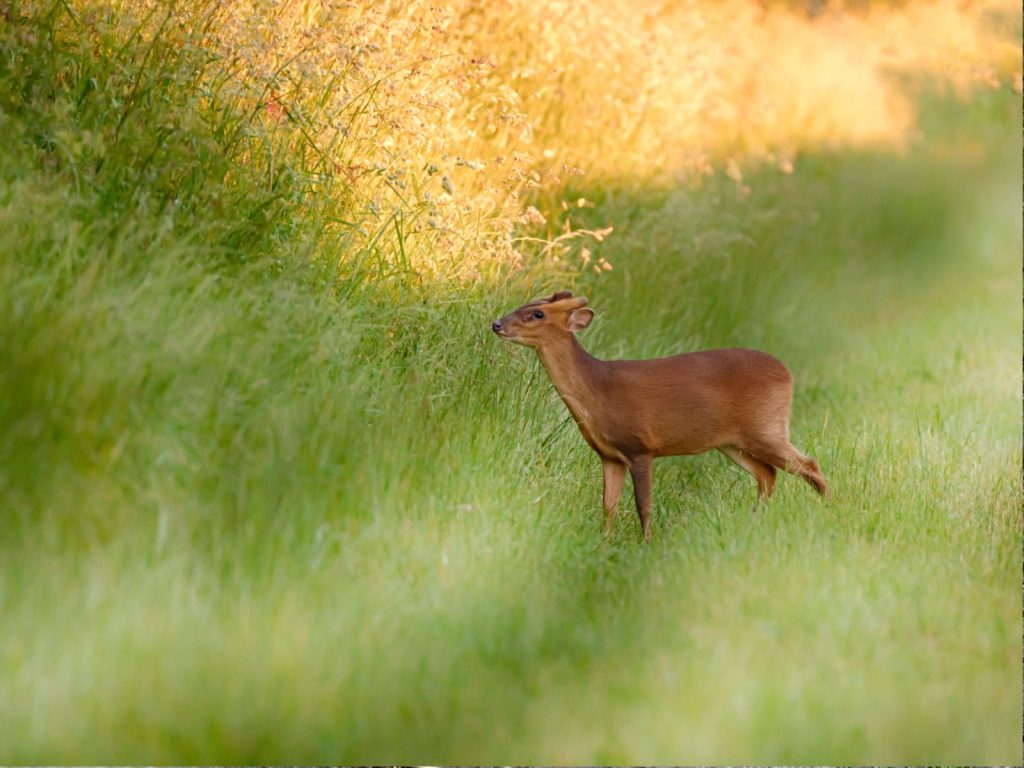
Unlike many deer species that live in herds, muntjac are generally solitary animals. Adult males and females only come together for mating. This solitary lifestyle, combined with their small size, makes them well-suited to living in fragmented habitats and urban areas where larger deer species might struggle. Males are territorial and will defend their area against other males, especially during the breeding season.
Legal Challenges
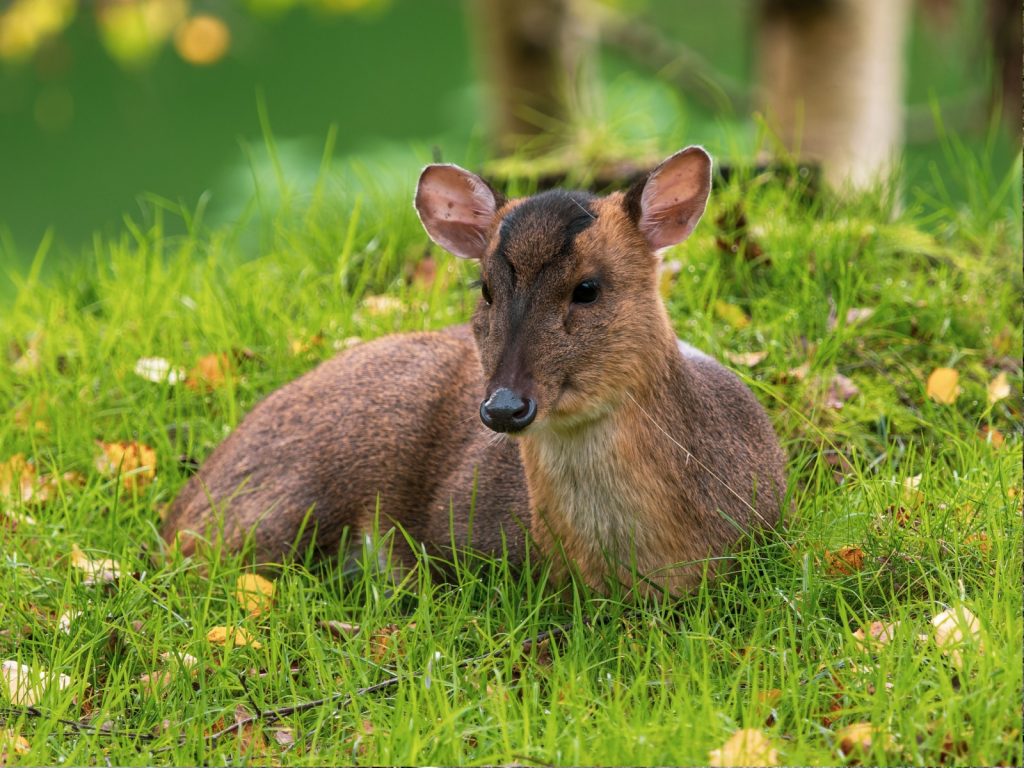
The management of muntjac poses legal and ethical challenges. As an invasive species, there are few restrictions on hunting muntjac. However, animal welfare concerns and the practicalities of controlling such a widespread species make management difficult. Their status as both a pest and a unique part of Britain’s modern fauna creates ongoing debates. Under the Deer Act 1991, muntjac can be culled year-round, but there are strict regulations on methods and timing to ensure humane practices.
Impressive Jumpers
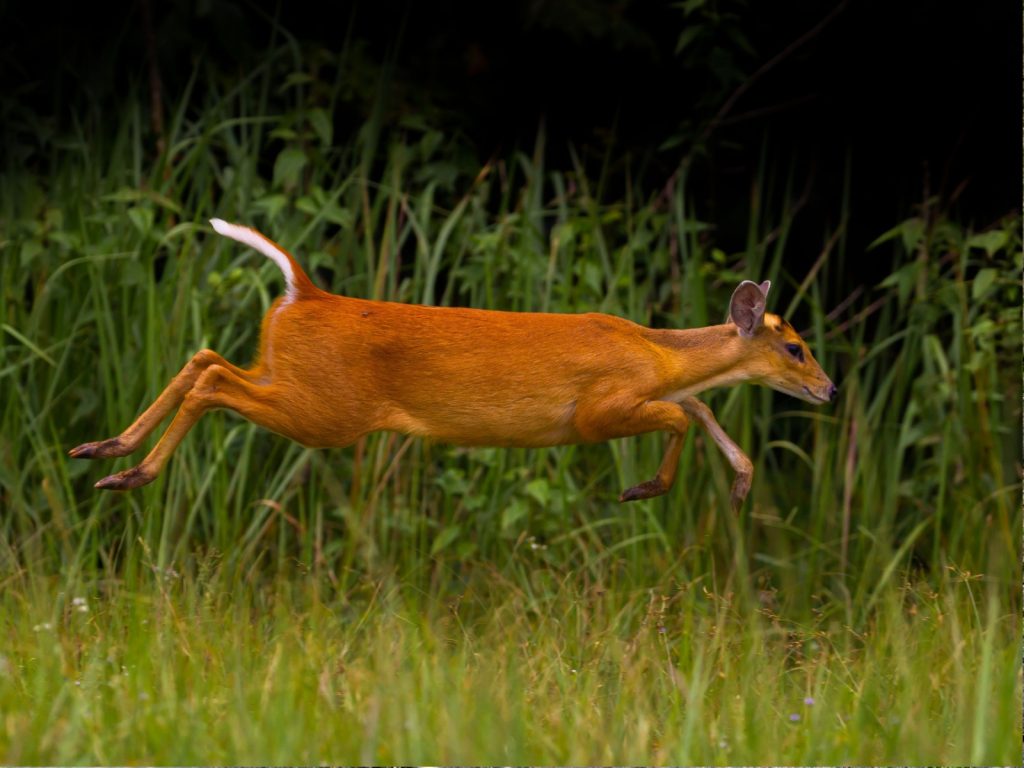
Despite their small size, muntjac are capable of impressive leaps. They can jump up to 1.5 metres high from a standing start. This ability allows them to easily clear garden fences and hedges, making them a frequent, and sometimes unwelcome, garden visitor in many areas. Their agility also helps them escape predators and navigate through dense undergrowth.
Constant Chompers
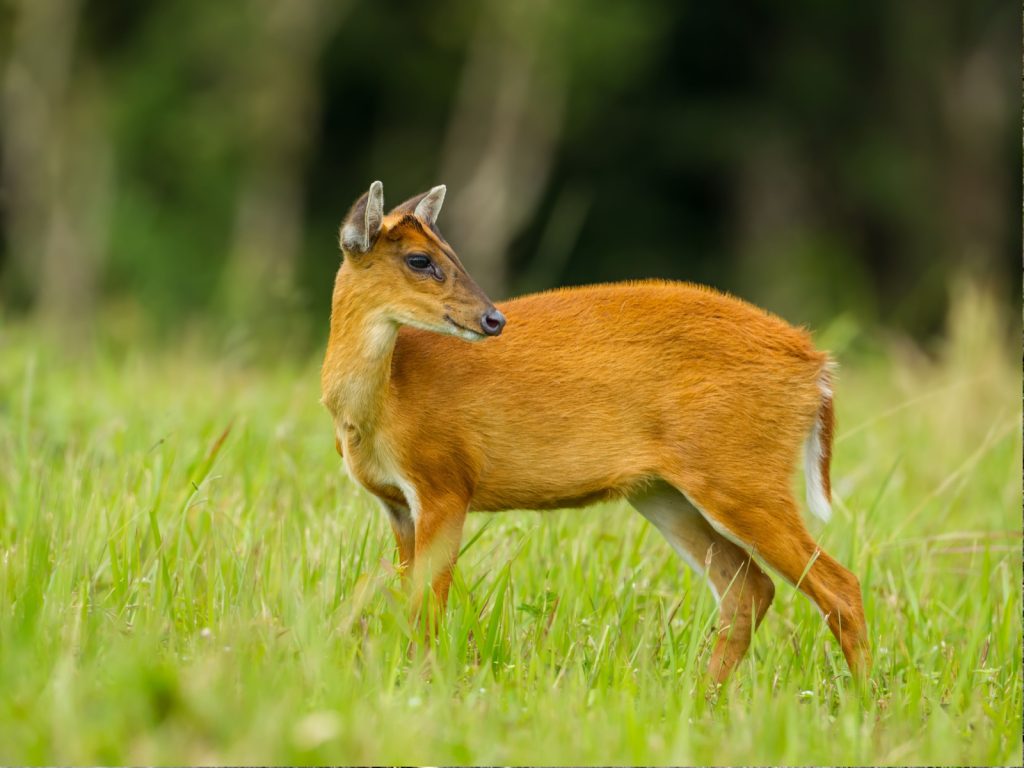
Muntjac have a unique digestive system that requires them to eat almost constantly. Unlike larger deer species that can process large amounts of food at once, muntjac need to graze frequently throughout the day and night. This constant feeding behaviour contributes to their impact on local plant life. Their digestive system is adapted to process a wide variety of plant material, allowing them to survive in diverse habitats.
Problematic Hitchhikers
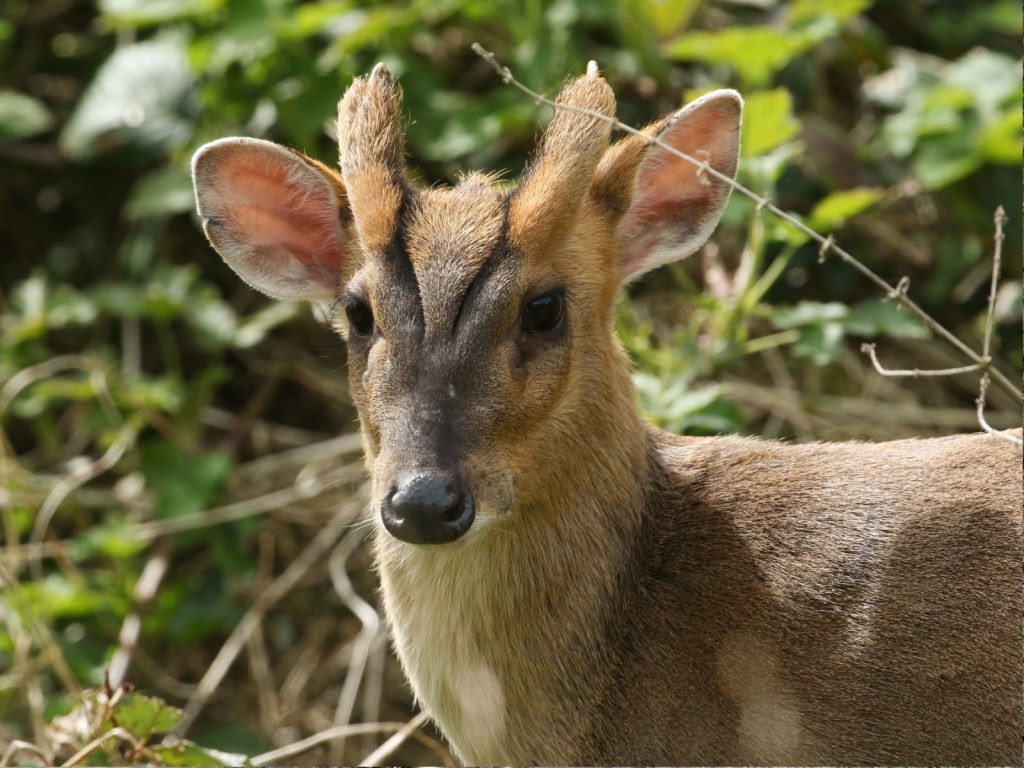
The spread of muntjac across Britain has been aided by both accidental and intentional human actions. Some populations have established after muntjac escaped from deer parks or were deliberately released by landowners. There have even been cases of people capturing and relocating muntjac, unknowingly contributing to their spread as an invasive species. It’s now illegal to release muntjac into the wild or to transport them to new areas without a licence.
Climate Change Beneficiaries
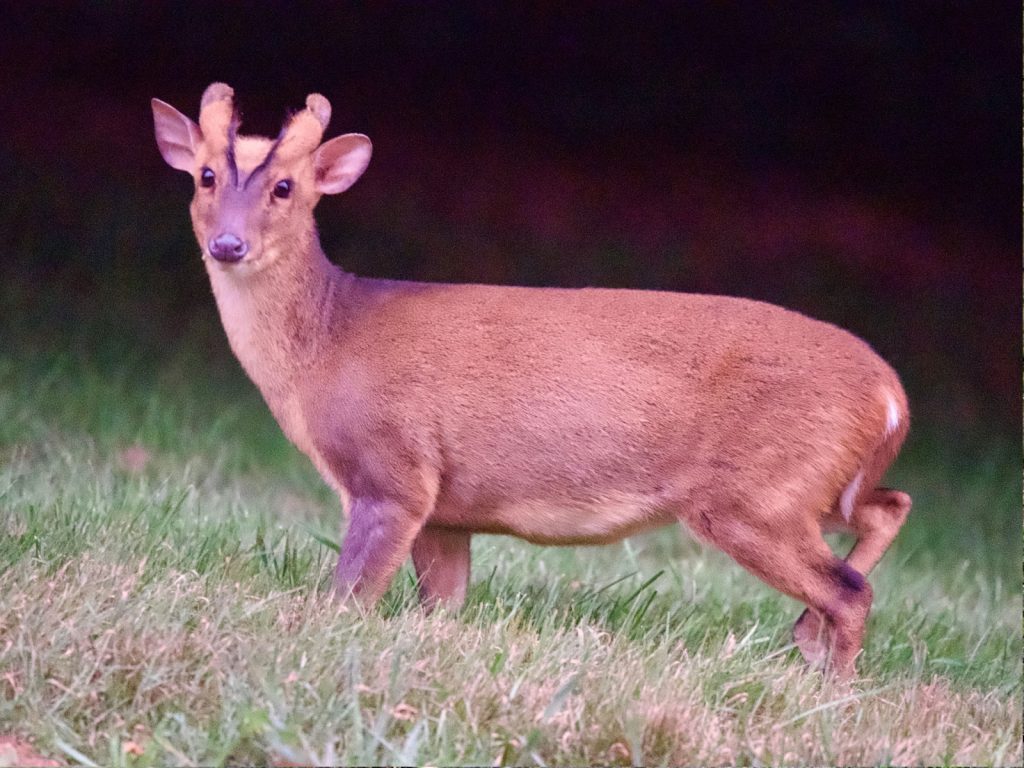
As Britain’s climate warms, muntjac are likely to benefit. Milder winters mean less risk of cold-related deaths and potentially more food availability year-round. This could lead to further population growth and spread, potentially increasing their impact on native ecosystems. Climate change may also allow muntjac to expand their range northward into areas that were previously too cold for them.
Research Subjects
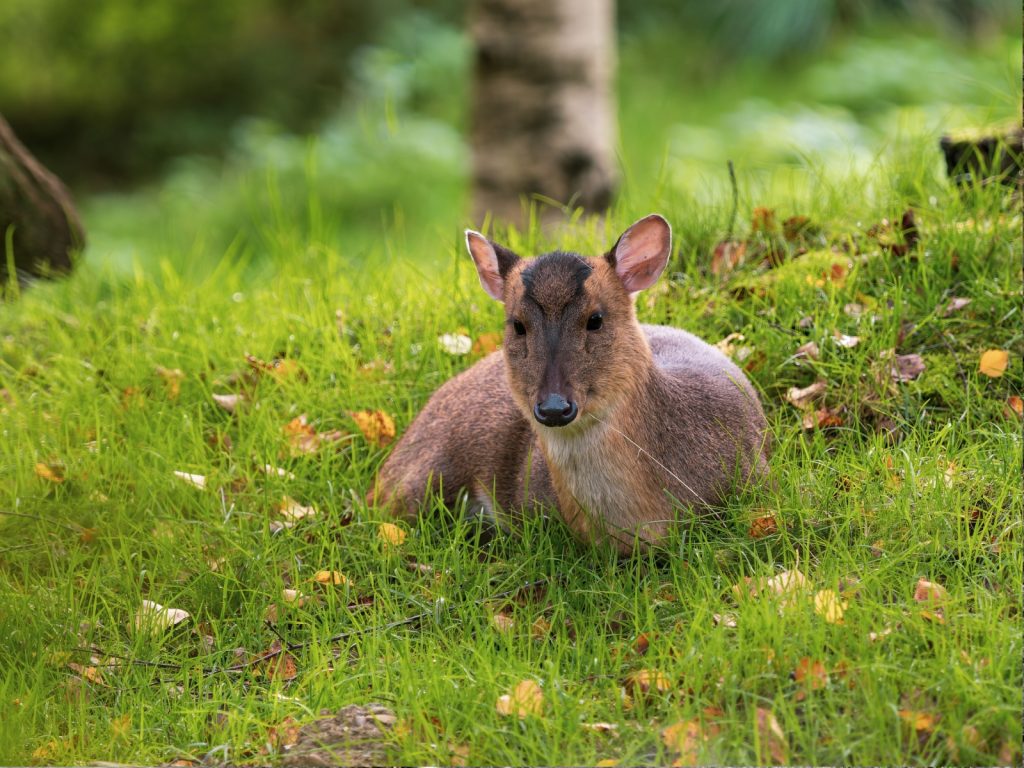
Despite the problems they cause, muntjac have become valuable subjects for scientific research. Studies on their behaviour, ecology, and impact on British ecosystems provide insights into invasion biology and wildlife management. This research could help in developing strategies to manage other invasive species in the future. Muntjac have also been used in studies on deer genetics, evolution, and adaptive behaviours in changing environments.

